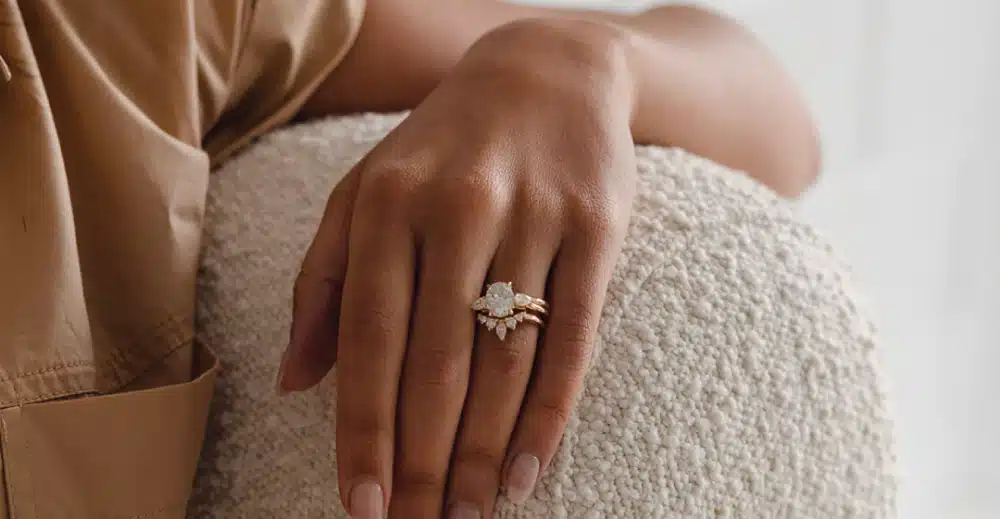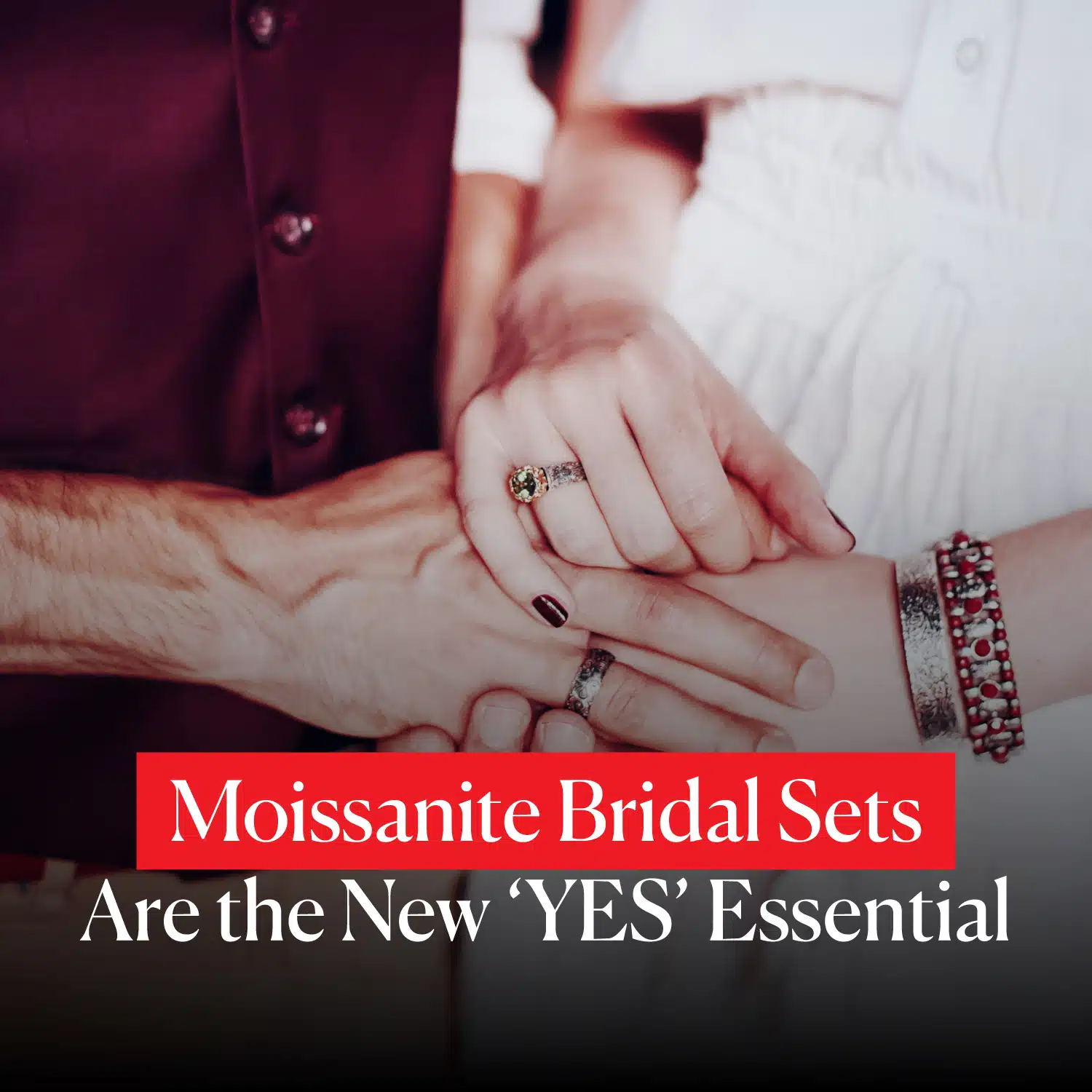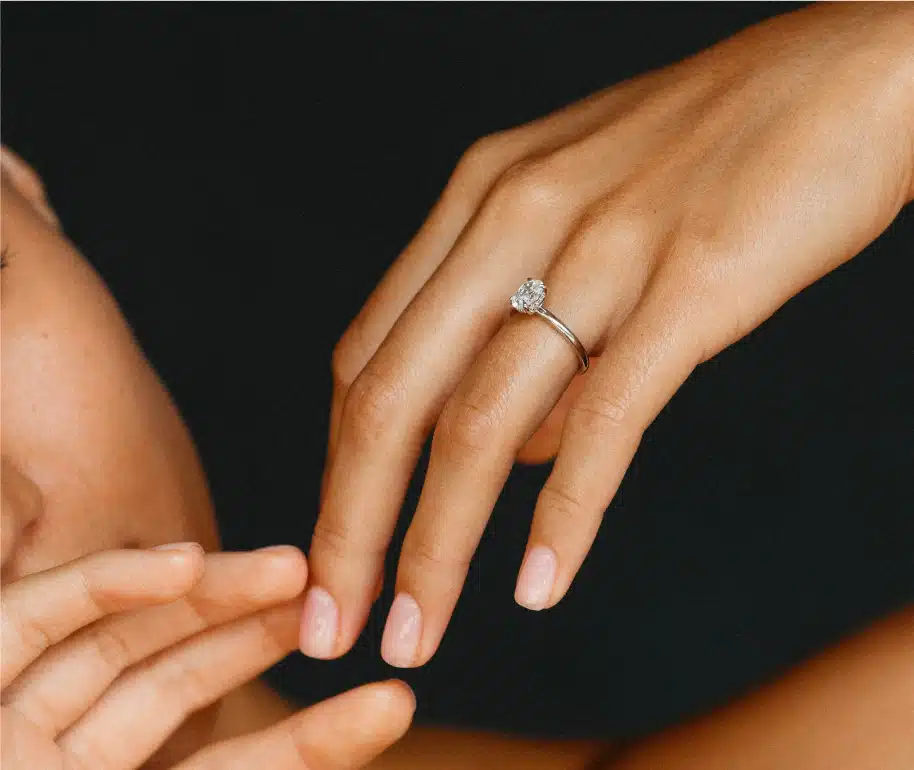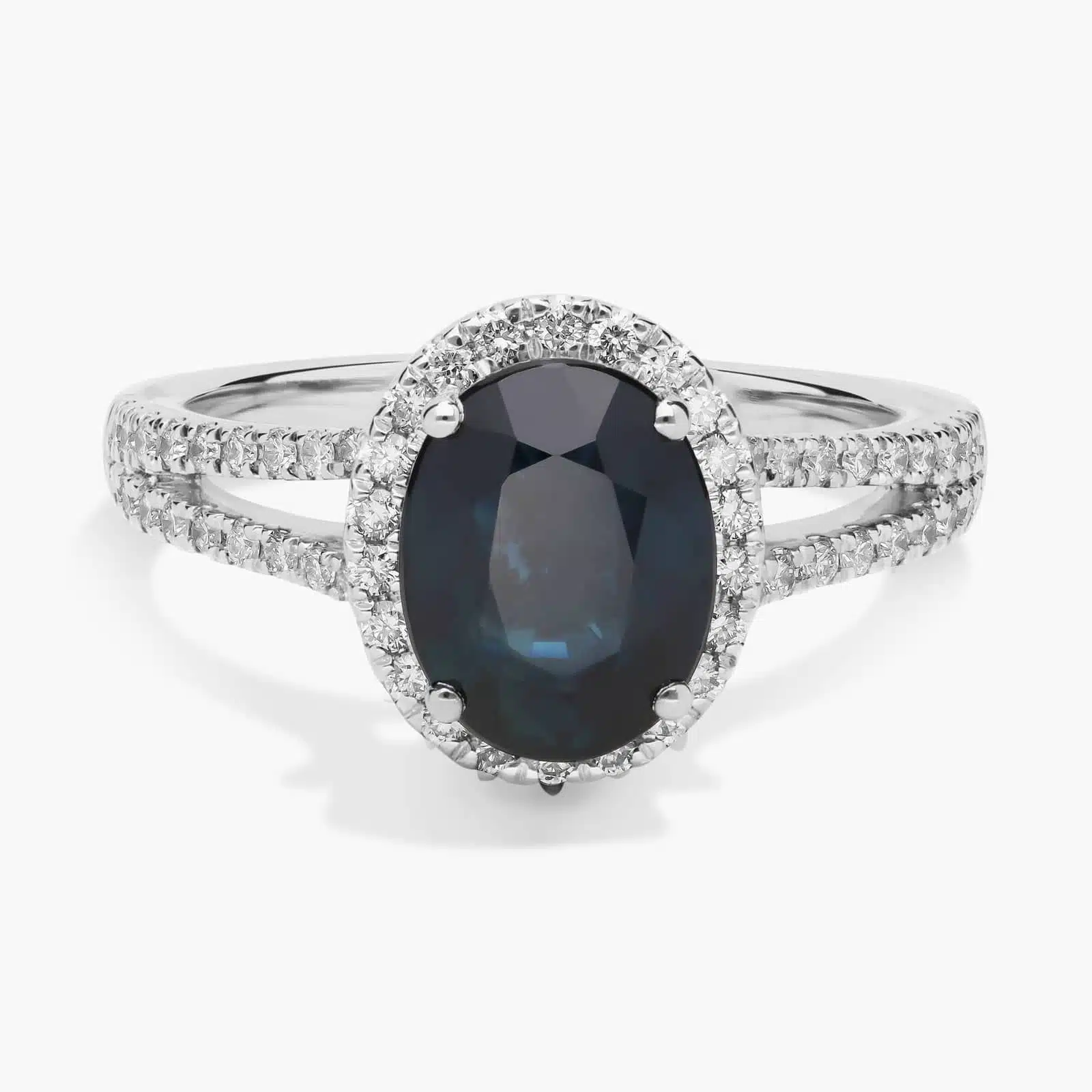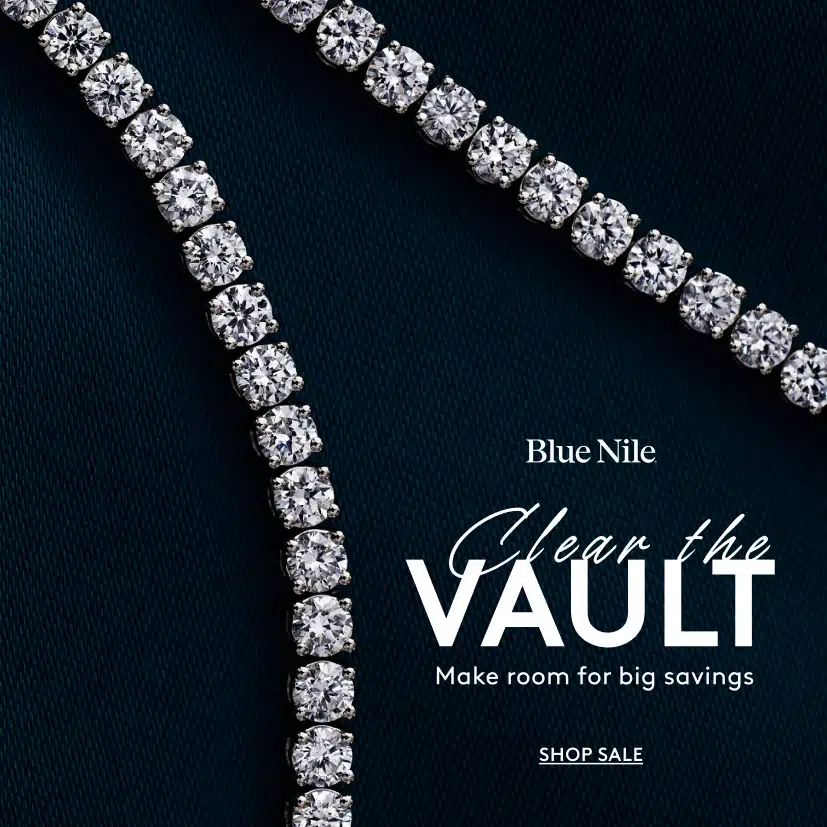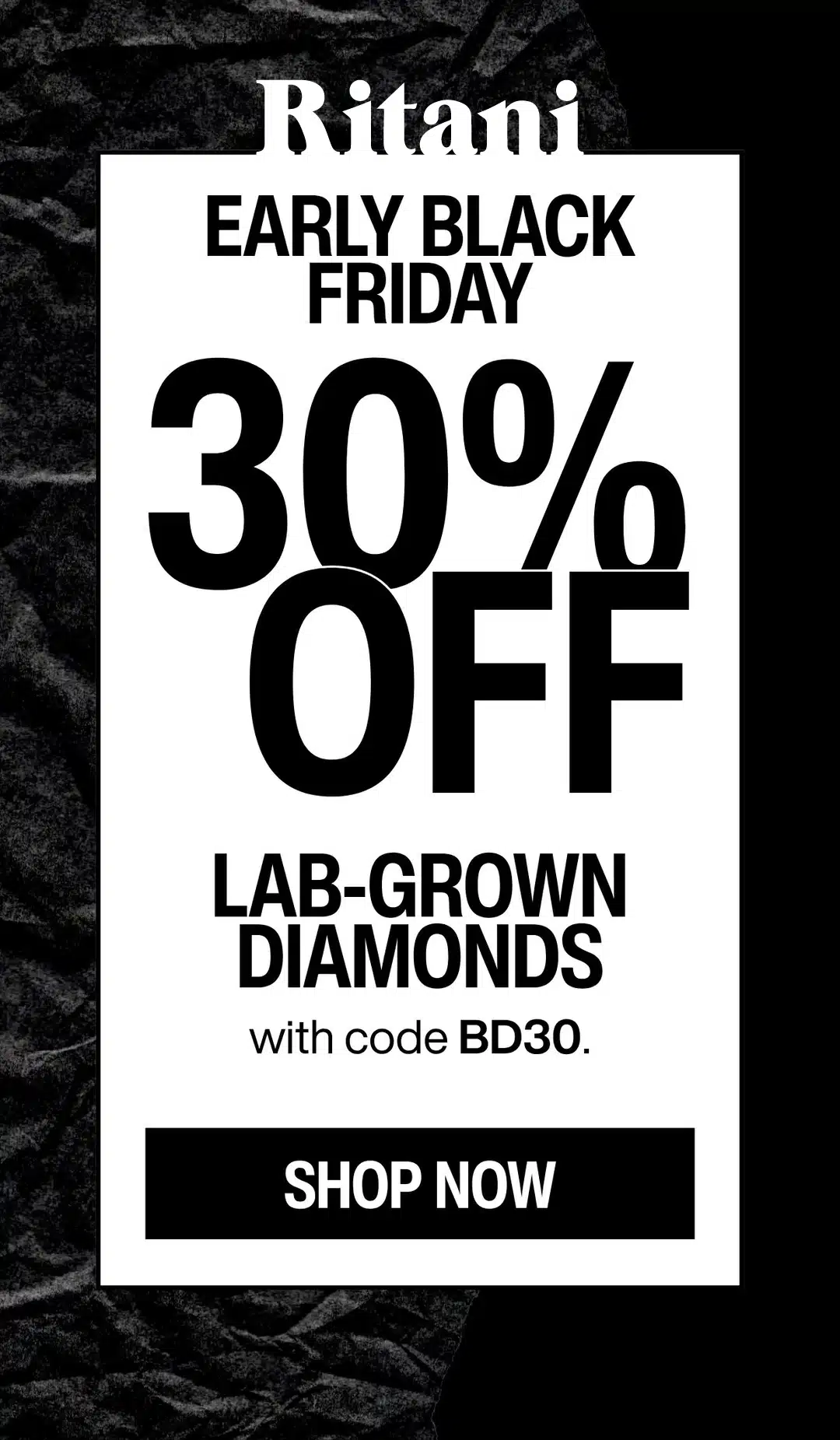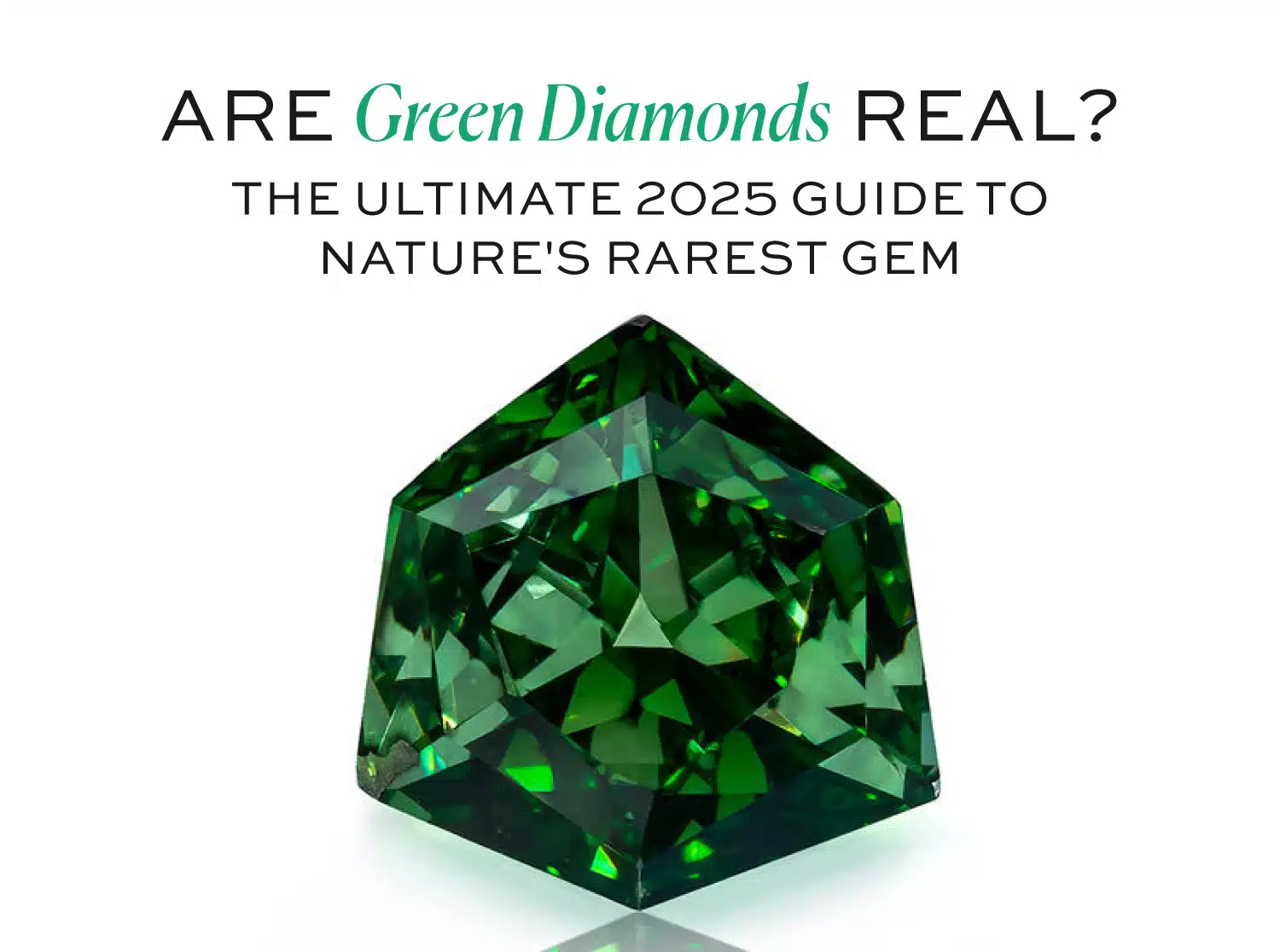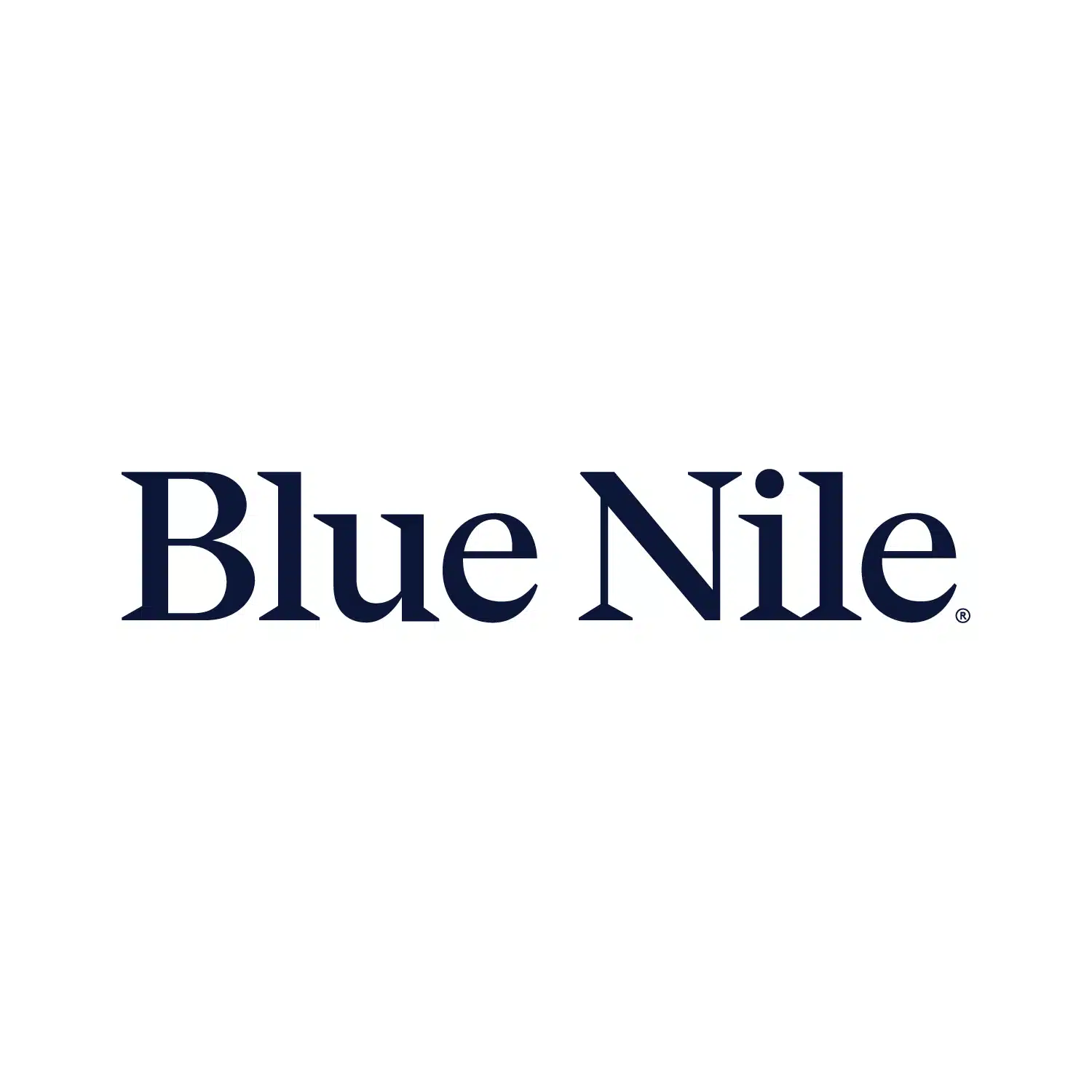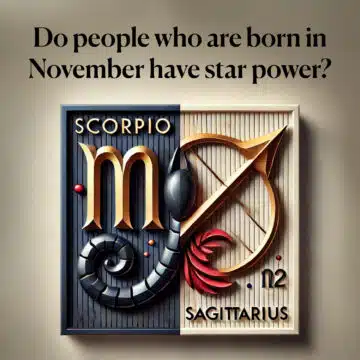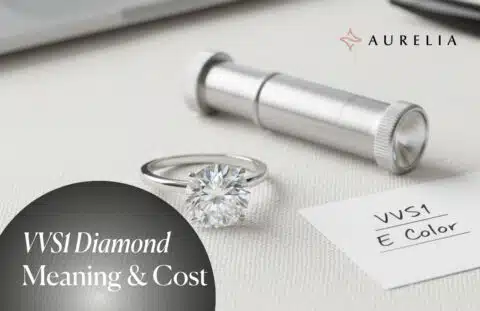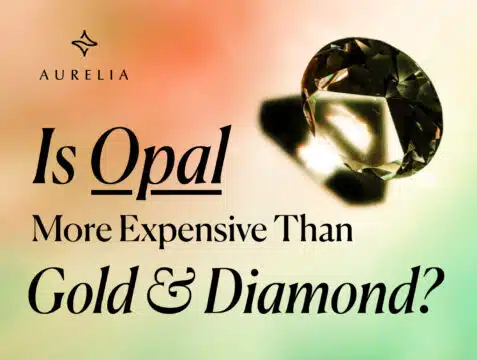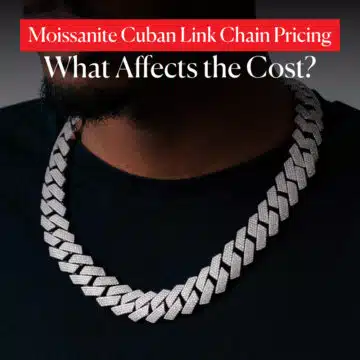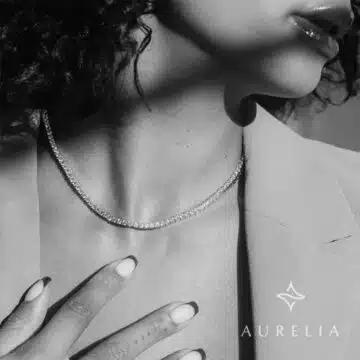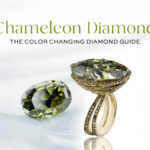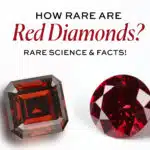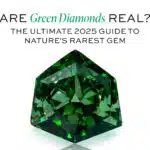Yes, real green diamonds absolutely exist, but they are among the rarest and most mysterious of all colored diamonds, getting their unique color not from impurities, but from natural, gentle radiation exposure within the Earth over millions of years.
Let’s get one thing straight right away: when we talk about what is a green diamond, we’re not talking about a simple stone. We’re talking about a geological miracle. This is a diamond that, through sheer chance, happened to be in the right place at the right time to be gently “kissed” by the earth’s natural energy for eons, transforming it into something breathtakingly rare.
Their mystique is legendary. These are gems so scarce they make up less than 0.1% of all fancy colored diamonds, with titans like the mythical Dresden Green defining the very pinnacle of rarity.
That’s why I’ve created this guide. This is the definitive, A-Z resource you’ve been searching for. As your expert guide, I’m going to take you on a journey into their fascinating, radioactive origins.
Deal Alert: Elevate your design. Get up to 30% OFF engagement ring settings at Blue Nile !
One In A Lifetime Sale: “Clear The Vault” – Get up to 70% OFF on select jewelry at Blue Nile !
| Pro Tip: See every detail with 360° HD videos available at James Allen .
We’ll see exactly why Jennifer Lopez’s iconic green diamond ring is so special, I will pull back the curtain and break down the staggering green diamond cost for both natural and lab-grown stones in 2025, and I will give you the expert knowledge to truly appreciate—and perhaps even one day purchase—one of these incredible, enigmatic gems.
Welcome to the magical world of the natural green diamond. Let’s begin.
Diamond IQ Test: Natural or Lab-Grown?
Two identical diamonds: GIA Certified, 1.51ct, D Color, VVS1, Ideal Cut. One is natural ($16,530), the other is lab-grown ($2,390). Choose the diamond you like better and see if you can match it to its origin.
The Science of Green: How Nature Paints a Diamond
To answer the question “are green diamonds real?” you first have to understand their origin story, and it is unlike any other gem. It’s a story of pure, geological chance—a process that sounds like science fiction but is a testament to the quiet, powerful forces of our planet.
The “Kiss” of Radiation: Nature’s Gentle Embellishment
The secret to a natural green diamond is a process called natural irradiation. It’s what I like to call a “kiss” from the Earth. Here’s what that means in the Mehedi voice:
“The secret to a natural green diamond is a process that sounds like science fiction: natural irradiation. Over millions of years, after a diamond was already formed and brought near the surface, it happened to rest near other rocks containing radioactive minerals, like uranium.
That gentle, persistent energy from those minerals bombarded the diamond, knocking carbon atoms out of their perfect crystal structure. This tiny ‘flaw’, this atomic-level disruption, is the miracle.
It changes how the diamond absorbs light, causing it to absorb red and yellow wavelengths and powerfully reflect that beautiful, impossibly rare green hue.”
It’s a color that isn’t in the diamond’s chemistry, like the nitrogen in a yellow diamond; it’s a color that was painted onto it by the earth’s own energy.
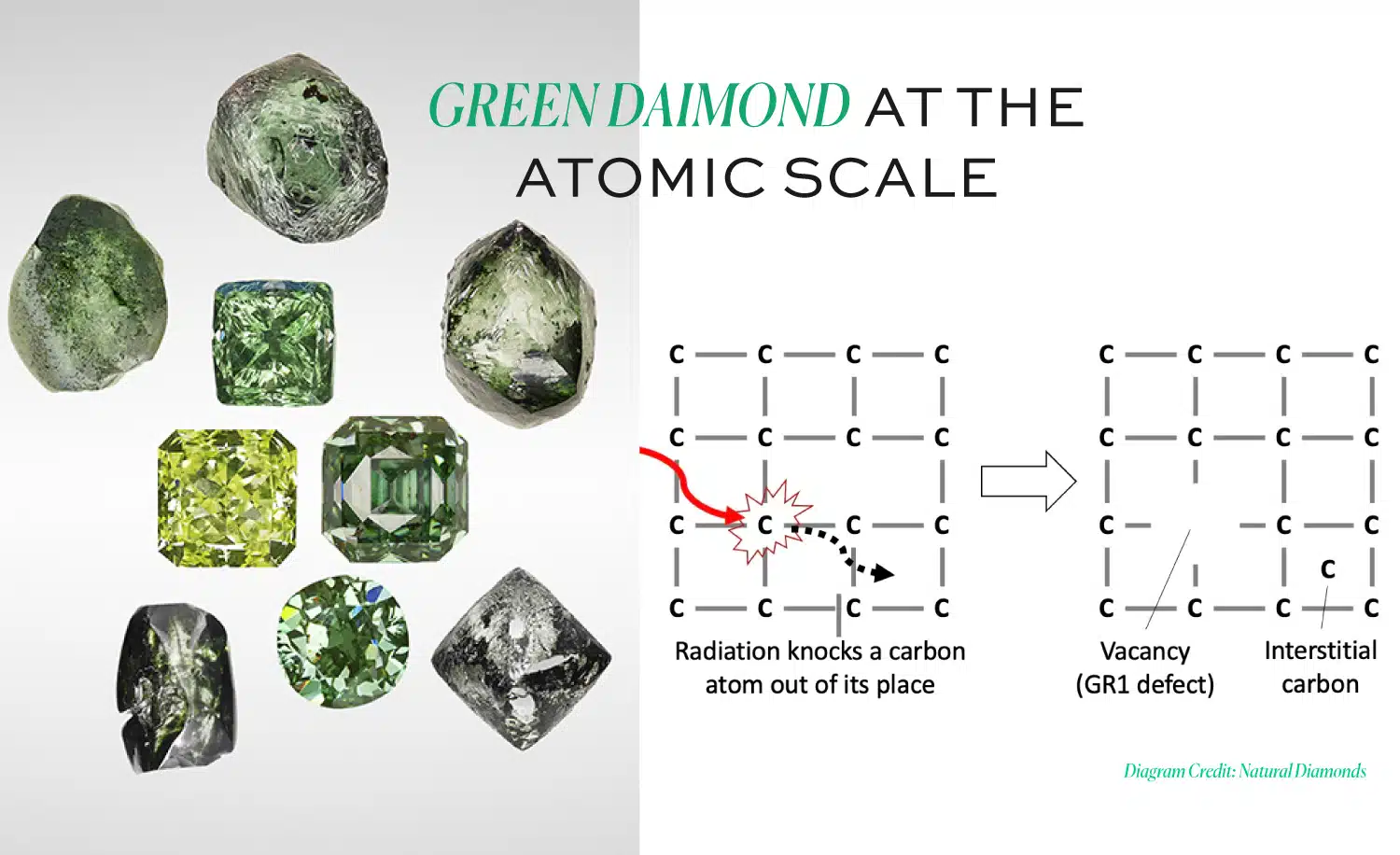
A Clue to Its Past: Green Stains on a Rough Diamond
This is where the story gets really cool and how experts begin to tell a true natural green diamond from others. The evidence of this natural radiation is often left right on the surface of the green diamond rough stone.
These stones are frequently found with literal green or brownish “stains” on their “skin.” These are the exact spots where tiny radioactive mineral grains were physically touching the diamond for millennia.
When a master cutter receives a raw green diamond, their job is a nerve-wracking balancing act. They must polish away imperfections while trying to preserve a tiny piece of this original “skin,” often on the girdle of the finished gem.
This unpolished spot is called a “Natural,” and for a gemologist, it is the ultimate proof, the smoking gun, that the diamond’s color is of natural origin. The process of making these decisions is an art, a level of skill beyond what we discuss in our general Diamond Cut Chart.
The Lab’s Intervention: The Critical World of Treated Green Diamonds
Now for the part that every buyer absolutely must understand. Because a natural green is so incredibly rare and valuable, scientists have developed ways to mimic nature’s process in a lab. This creates what are called “treated” or “artificially irradiated” green diamonds.
Here’s the breakdown:
- The Process: A less valuable, typically pale yellowish or brownish, natural diamond is taken and exposed to a safe, controlled beam of radiation in a laboratory. This process creates the same type of atomic flaw (GR1 center) and turns the diamond green.
- Is it a Real Diamond? Yes, absolutely. It is a real green diamond in the sense that the underlying stone is a 100% natural diamond.
- Is the Color Natural? No. The color has been artificially induced by humans.
My Expert Take: “This is the million-dollar distinction. The difference in value between a diamond whose color comes from millions of years of natural irradiation and one that got its color in a lab over a few hours is astronomical.
A treated green diamond might cost a few thousand dollars. A natural green diamond of the same size and look can cost hundreds of thousands, if not millions. They are not in the same league.”
This is why, for an investment-grade green diamond, a GIA report is non-negotiable. It is your only protection. The report will explicitly state the “Origin of Color.” If it says “Natural,” you have a rare treasure.
If it says “Treated” or “Undetermined,” you must proceed with the understanding that you are not buying a top-tier collector’s piece. The difference in a single word on a certificate is everything, a hard lesson we explore in my complete guide on EGL vs. GIA Certification.
The Rarity Factor: Nature’s Almost Impossible Gem

In the world of diamonds, we use the word “rare” a lot. But when a GIA-trained gemologist like me talks about a natural green diamond, we are speaking a different language entirely. We’re moving beyond rarity and into a realm of geological impossibility that makes these gems the ultimate treasure hunt.
Putting Green in Perspective: The Rarity Hierarchy
To understand how special a green diamond is, let’s get some perspective. Fancy colored diamonds as a whole are an exclusive club. But even within that club, there is a clear pecking order.
Based on GIA data and sourcing experience, natural green diamonds make up less than 0.1% of all fancy colored diamonds graded. Let me make that real for you: for every 10,000 fancy diamonds that are unearthed—which are already rare—fewer than 10 will be green. And of those, the number with a pure, saturated color is even smaller.
This places green diamonds firmly in the top tier of rarity, among the most elite gems on the planet:
- In their pure, unmodified form, they are significantly rarer than Natural Orange Diamonds.
- Finding a high-quality green is often considered even more challenging for dealers than sourcing many Blue Diamonds or Pink Diamonds.
- The only natural color that is definitively, undisputed rarer is a pure red diamond.
My Expert Take: “A Fancy Vivid Green Diamond is a true ‘unicorn’ gem. Most experienced dealers will go their entire careers without holding a significant one. Finding a great green diamond isn’t a purchase; it’s a hunt, often spanning years and multiple continents.”
The Legends That Prove the Rarity
The story of a gem’s rarity is best told by the legends that define it. For green diamonds, two stones stand as the ultimate proof of their mythical status: the historical king and the modern queen.

The Dresden Green is the ultimate benchmark for this incredible color. Its story is the stuff of legend.
- The Stone: A magnificent 41-carat, naturally green, pear-shaped diamond. What makes it even more extraordinary is its Internally Flawless clarity grade.
- The Origin: It was discovered in the historic Golconda mines of India, a source of many of the world’s most legendary gems.
- The History: Its history is documented all the way back to the 1700s. This is incredibly important because its existence proves that this amazing green color is a natural phenomenon, long before the invention of artificial irradiation treatments in the 1940s. Its documented provenance is everything.
The Dresden Green is more than a diamond; it’s an artifact that authenticates the entire category. Its history is its certificate of authenticity, a concept at the very heart of why we trust in systems that verify a gem’s origin, which I explain in my guide to What Are the Best Diamond Certifications?.
If the Dresden Green is the historical king, then Jennifer Lopez’s ring is the modern queen that brought this mythical color roaring back into the spotlight.
In 2022, she received a now-iconic 8.5-carat, natural fancy intense green diamond ring from Ben Affleck. Flanked by two trapezoid-shaped white diamonds, its value is estimated to be over $5 million, and some experts believe it could be worth twice that today.
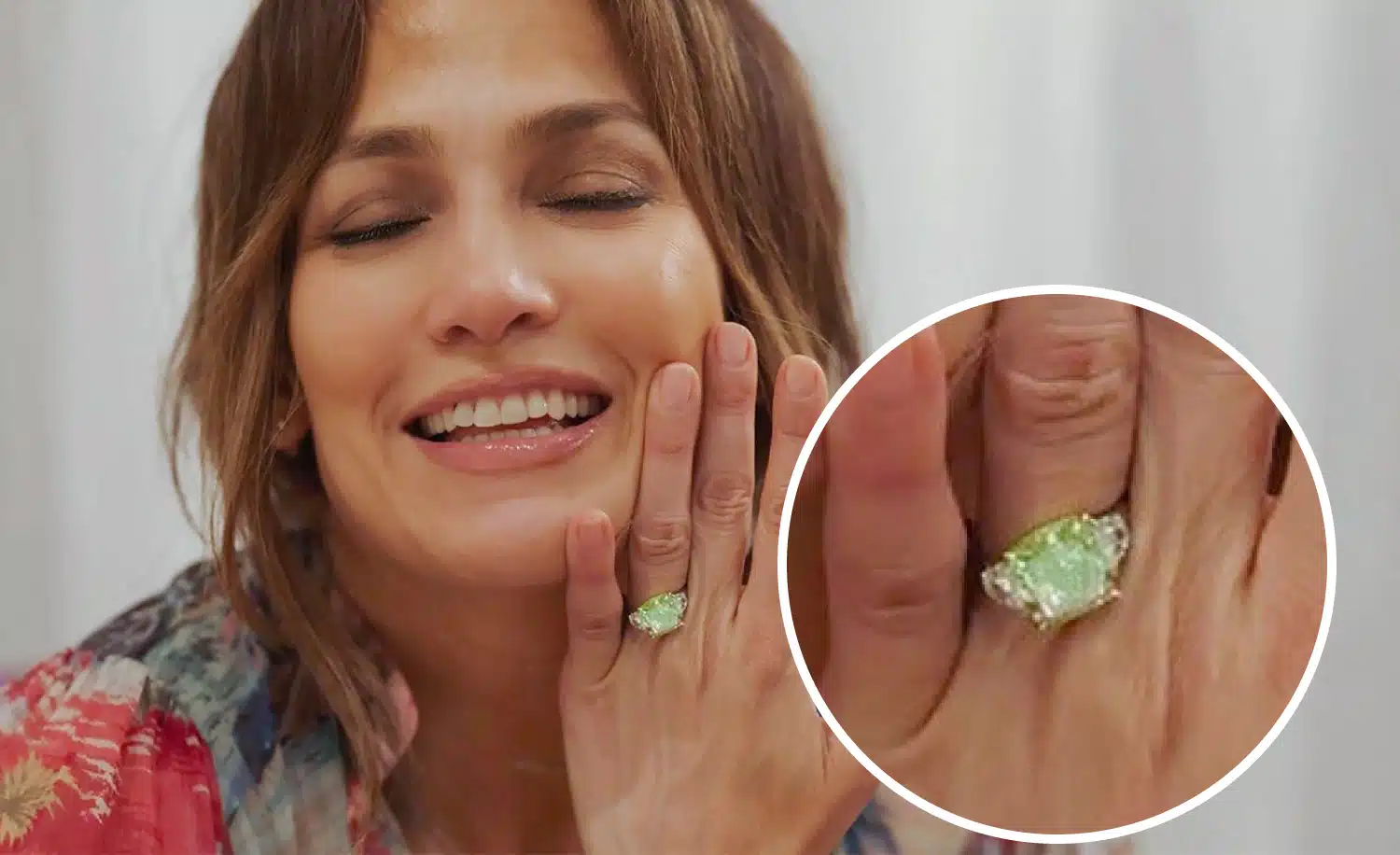
This ring was a cultural moment. It reintroduced the world to the incredible beauty of a top-tier green diamond and created a massive surge in interest. It’s a perfect example of how a single celebrity’s choice can ignite a trend and create a new icon.
This is a phenomenon we explore in-depth in my guide to the Iconic Yellow Diamond Engagement Rings of Celebrities. The power of a personal story, whether it’s an engagement or another life milestone, is what gives a piece of jewelry its soul, a theme we also celebrate in our guide to Luxury Push Present Ideas.
Green Diamond Price Guide: The Two Realities of Green Diamond Cost
When you ask, “how much is a green diamond?” you have to understand that in 2025, you are asking about two completely different worlds. On one side, you have the natural, investment-grade collector’s piece—a world of jaw-dropping prices and historical assets.
On the other, you have the modern, accessible reality of the lab-grown marvel. As your guide, it is my job to make you an expert in both.
Reality #1: The Natural Green Diamond Market
This is the world of true rarity, where geology dictates price. Based on the very latest 2025 market data, while the broader market for colorless diamonds has seen a significant drop, the demand for top-tier, rare green diamonds has remained incredibly resilient. These gems are like fine art; their extreme scarcity insulates them from mass-market pressures.
The Critical Impact of Secondary Colors
But the natural green diamond price is hyper-sensitive to the nuances of its color. The presence of a secondary hue, like yellow or gray, can change the price by a factor of ten or more.
Let’s look at real-world examples available today to see just how dramatic this is.
In a market where high-quality, rare green diamonds are sourced less than 0.1% of the time, their value holds incredibly well. The single biggest driver of that value is the purity of the green hue.
To show you what we mean, let’s look at two real 1.00 carat stones from Blue Nile:
- The Accessible Option: The GIA 1.00 Carat Fancy Yellow Green-SI2 Oval Cut Diamond is priced around $11,280. It has a lovely green presence, but the dominant ‘Yellow’ modifier makes it one of the most accessible natural green diamonds you can find.
- The Pure Rarity: Now, compare that to a GIA 1.00 Carat Fancy Green-SI2 Oval Cut Diamond, also at Blue Nile. The price is $55,090.
Let that sink in. That is an almost five-fold price jump (or five times the price) for moving from a “Yellow Green” to a “Fancy Green” of the same carat and clarity grade. The market is telling you loud and clear: purity is king. This is the crucial lesson in understanding the extraordinary value of a primary green hue.
The Power of an ‘Intense’ Grade
Ready for another leap? Let’s go up the GIA scale. A beautiful GIA 1.00 Carat Fancy Intense Yellow Green-SI1 Cushion Modified Cut Diamond from Blue Nile commands a price of $43,340. Even with the yellowish modifier, that single step up in saturation to “Intense” can double or even triple the price.
It’s the difference between a beautiful stone and a truly “important” one that will hold significant long-term value, a key concept we discuss in our guide, How Much a Diamond Can Be Sold For.
Reality #2: The Lab-Grown Revolution
Now, let’s step into the reality that has completely changed the game for 99% of us. Thanks to incredible scientific breakthroughs, you can now own a green diamond that is chemically, physically, and visually identical to a natural one, but for a price that is 80-95% cheaper. This isn’t a “fake”; it is a real green diamond, just with a modern origin story.
This is where your jaw will drop.
Look at this spectacular IGI 5.06 Carat Fancy Vivid Green-VS1 Cushion Cut Lab-Grown Diamond available at Blue Nile. The price is just $3,330. This isn’t a typo. That’s over five carats of the absolute top color grade—a “Fancy Vivid Green”—for less than the smallest, most included natural stone with a hint of green.
A natural diamond of this size and color, if you could even find one, would be millions of dollars. This is the ultimate example of modern luxury, made accessible. You are getting a world-class stone, and you can learn about its certification in our guide to GIA Certified Synthetic Diamonds.
The Bottom Line: Price Comparison at a Glance (1-Carat)
| Stone Quality (1-Carat) | Natural Green Diamond Price | Lab-Grown Green Diamond Price |
| Fancy Light Green (with modifiers) | $5,000 – $20,000+ | $500 – $2,000 |
| Fancy Intense/Vivid Green | $50,000 – $250,000+ | $2,000 – $10,000+ |
This table says it all. You have two incredible paths to owning one of the world’s most captivating colors. Your choice simply depends on whether you value geological rarity or breathtaking, accessible beauty.
Deal Alert: Elevate your design. Get up to 30% OFF engagement ring settings at Blue Nile !
One In A Lifetime Sale: “Clear The Vault” – Get up to 70% OFF on select jewelry at Blue Nile !
| Pro Tip: See every detail with 360° HD videos available at James Allen .
How to Buy the Perfect Green Diamond Ring
You’re inspired by the legends, you understand the science, and you’re captivated by the rarity. Now comes the most exciting part: how do you actually find and choose a green diamond ring that’s perfect for you? This is where my job as your trusted guide gets serious.
The rules for buying a green diamond are completely different from buying a classic white one. You need to think like a specialist, and I’m going to walk you through the three most critical decisions you’ll make.
Reading the Color: Your #1 Priority
In the world of fancy green diamonds, Color isn’t just a C; it is the only thing that truly matters for its value and beauty. Everything begins and ends with the hue.
You know the GIA scale, from a soft Faint Green to a world-class Fancy Vivid Green. But when you’re actually looking at stones, the most important detail to decipher is the secondary hue. This is what defines the diamond’s personality and its price tag.
- Yellowish-Green: The most common combination. This creates a vibrant, zesty color, like fresh spring leaves. It is beautiful and highly desirable.
- Bluish-Green: A very rare and valuable modifier. This creates a stunning teal or seafoam hue, reminiscent of tropical waters. A bluish green diamond ring is a true collector’s prize.
- Grayish-Green: This modifier creates a sophisticated, earthy tone, like sage or moss. While beautiful, a grayish hue is less desirable than a yellowish or bluish one and will therefore be more affordable.
My Expert Take: “A natural green diamond is so rare that a cutter will do everything in their power to save every last carat. This means you will find them in every imaginable shape—cushions, radiants, pears, you name it. The green diamond shape is chosen to best enhance the color of that specific rough crystal, not to follow a trend.”
You can learn more about how shape affects appearance in my deep-dive on the Pear Shaped Diamond.
The Importance of Cut: The Unsung Hero of Color
Here’s a crucial piece of insider knowledge: if you’ve studied the 4Cs for colorless diamonds, you need to forget everything you think you know about Cut when it comes to a green diamond. The cutter’s goal here is completely different.
Mehedi’s Expert Take: “With a green diamond, the cutter’s goal is not to maximize brilliance and sparkle. Their #1 job is to maximize color saturation. They will strategically arrange the facets to trap light and force it to bounce around inside the stone for as long as possible, picking up as much rich green color as it can before it returns to your eye.”
This is why fancy shapes are the rule, not the exception.
- Shapes like the Radiant and Cushion are king in the fancy color world. Their mixed faceting patterns are perfect for both intensifying color and delivering sparkle.
- A classic Round Brilliant Cut is often avoided because its design is too efficient at returning white light, which can wash out a delicate fancy color.
To see just how differently a diamond can be cut for pure optical performance, you must read my guide on the ultimate cut for brilliance, Hearts and Arrows Diamonds. It will give you a profound appreciation for the unique art of cutting for color.
Choosing a Setting: The Jeweler’s Secret Weapon
The metal you choose for your green diamond ring isn’t just an aesthetic choice; it’s your secret weapon for enhancing the stone’s color.
Yellow Gold (The Harmony Strategy)
This is my number one recommendation for a yellow green diamond. The warmth of the yellow gold setting will complement the stone’s secondary yellow hue, making the entire gem appear richer, warmer, and more intentionally vibrant. It’s a classic jeweler’s trick to bring out the best in these stones.
Platinum or White Gold (The Contrast Strategy)
This is the perfect choice for a stone with a pure green or a desirable blue green diamond hue. The cool, stark white of the metal creates a crisp, high-contrast frame that makes the green pop with electric energy.
It’s a modern and sophisticated choice for a stone whose color is already strong enough to stand on its own. The skill in matching setting to stone is something I deeply respect, a factor in my Taylor & Hart review.
Where to Find Green Diamonds For Sale
A great selection of natural green diamonds for sale is not something you will find at your local jeweler. You need to go to the specialists with a global inventory. My top recommendations are James Allen and Blue Nile for two very specific and powerful reasons:
- Their Visualization Technology is Essential: For a gem where subtle shifts in hue can mean tens of thousands of dollars, their 360°, high-resolution videos are non-negotiable for judging the true color.
- They Offer Both Realities: Crucially, they are among the only major retailers to offer a robust and searchable inventory of both natural and lab-grown green diamonds. This is a massive advantage for you, the buyer.
You can directly compare the options, see the value difference with your own eyes, and make the absolute smartest decision for your budget. The quality of the online experience is a major factor, which I break down in my comprehensive Blue Nile Review.
James Allen: Our 5-Star Choice for Price and Selection
Check our comprehensive James Allen Review to learn more about their pricing and commitment.
Your Green Diamond Questions, Answered (FAQ)
You have questions about one of the most mysterious and captivating gems on Earth, and you deserve clear, expert answers. Let’s tackle the most common and important queries I hear from clients who are enchanted by the magic of the green diamond.
My Final Verdict: The Earth’s Most Enigmatic Gem
We began this journey by asking a simple question: “are green diamonds real?” As you have now discovered, the answer is a resounding, fascinating YES.
A real green diamond is not just a stone; it is a story. It is a geological marvel “kissed” by the earth’s natural energy, a process so rare it produces one of the most enigmatic and coveted gems on the planet. Its story is told through legends like the flawless Dresden Green and brought into the modern world on the finger of style icons like Jennifer Lopez.
And in 2025, the story of this gem has split into two incredible realities.
- The Natural Green Diamond remains the ultimate treasure—an investment-grade piece of planetary history, a symbol of extreme rarity and enduring value.
- The Lab-Grown Green Diamond is the modern miracle—a visually and scientifically identical masterpiece that makes this captivating, once-unattainable color an accessible dream.
Whether you choose a legend of the earth or a marvel of the lab, you are choosing a gem of profound beauty and mystique. The power to own a piece of this magic is, for the first time in history, entirely in your hands.
Continue Your Research Journey
You are now an expert on one of the rarest gemstones in the world. You understand its secret origins, its modern market, and the incredible choices you have as a buyer. The next step is to take this knowledge and apply it to the final details of your diamond journey. These hand-picked guides will turn you from an informed enthusiast into a confident, savvy buyer.
Deepen Your Knowledge of Retailers
You know where to look. Now, let’s put the industry’s biggest names under the microscope to see which one is truly right for you.
- An Unfiltered Showdown: My honest, expert comparison in Brilliant Earth vs. James Allen: Who Really Comes Out on Top?.
- The Ultimate Question of Trust: A deep dive into a major online player in Is Ritani Legit? A Jeweler’s Perspective.
- A Look at an Industry Titan: My complete, no-holds-barred James Allen Review.
Become a Connoisseur of Diamond Details
Master the small but critical details that separate a good diamond from a truly great one.
- An Iconic and Sophisticated Cut: Our complete guide to the Asscher Cut Diamond.
- A Critical Detail of a Diamond’s Anatomy: An expert explanation in What is a Diamond’s Culet?.
- Comparing Two of the Most Popular Grades: The full breakdown in VS1 vs. VS2 Clarity: Is There a Visible Difference?.
Master the Practical Side of Buying
Let’s get down to the essential, real-world questions that will lead to a smart, confident, and timely purchase.
- The Savvy Shopper’s Secret: A frank and honest answer to Do Diamond Rings Go On Sale?.
- The All-Important Budget Question: A realistic look at the numbers in our guide, How Much Should You Spend on a Wedding Ring?.
- Planning a Spontaneous Purchase? Everything you need to know in Can You Buy an Engagement Ring Same Day?.
Blue Nile is one of the biggest and most recognized online jewelry retailers, offering an extensive and exclusive inventory. Their high-resolution images are improving and getting closer to the quality offered by James Allen, while their prices remain highly competitive. Right now, Blue Nile offers up to 30% savings on jewelry during a limited-time sale.
WHAT WE LOVE ABOUT THEM:
- 30-day no-questions-asked return policy, with a prepaid shipping label provided by Blue Nile.
- Lifetime warranty on all purchases.
- Free shipping on every order.
- Complimentary services every six months, including prong tightening, repolishing, rhodium plating, and cleaning.
- Insurance appraisal included with your purchase.
- One free resizing within the first year.
- High-quality images available for roughly half of their diamond selection.
- 24/7 customer service support.
- Full credit toward future upgrades, as long as the new item is at least double the value.
- Best-in-class order fulfillment process.
James Allen is a top leader in online diamond sales, offering cutting-edge imaging technology that lets you inspect diamonds as if you were using a jeweler's loupe. With the largest exclusive selection of loose diamonds available online and excellent pricing, they also boast one of the finest collections of lab-created diamonds on the market. They currently run a 25% discount on selected lab-grown diamonds!
WHAT WE LOVE ABOUT THEM:
- 30-day no-questions-asked return policy, with a prepaid shipping label provided by James Allen.
- Lifetime warranty on all purchases.
- Free international shipping.
- Complimentary prong tightening, repolishing, rhodium plating, and cleaning every six months.
- Insurance appraisals included with purchases.
- One free resizing within 60 days of purchase.
- Free ring inscriptions available.
- Best-in-class high-quality imagery for every diamond in stock.
- 24/7 customer support.
- Premium, best-in-class packaging.


